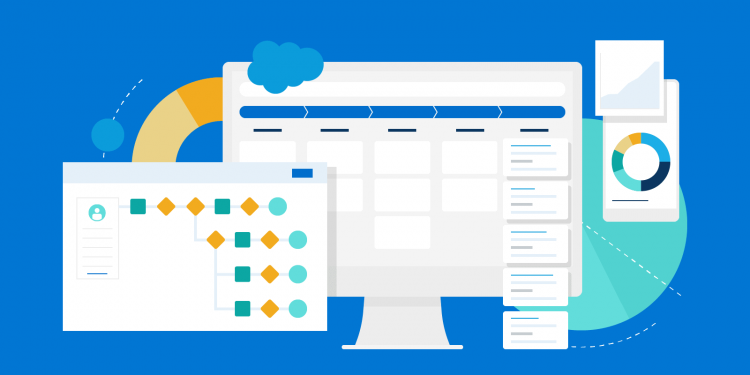Many enterprises from the private sector have been implementing the SaaS model before the pandemic; increased flexibility and scalability, coupled with ease of deployment, have made this technology highly demanded among various business verticals.
The COVID-19 pandemic and the unique challenges it brought have accelerated SaaS adoption, and this trend is not going to slow down. Gartner predicts that the total SaaS spending will increase to $117 billion in 2021; already in 2022, this figure will equal $138 billion, and the growth will continue even after the crisis subsides.
So why are enterprise managers continuing to invest in SaaS even at a time when companies tend to cut their IT budgets and cancel tech projects and hires? The reason is that in the pandemic, the SaaS model turned out to be more viable than the on-premises one, and here are some reasons why.
SaaS Provides Advanced Flexibility And Scalability
The pandemic is a great disruptor, but paradoxically, it didn’t only wreak havoc but also made some things more apparent; for example, it became evident that only those businesses that can adapt to rapidly changing market conditions can survive and succeed.
For many companies, SaaS has become the key to that continuous transformation. The point is that SaaS products are very flexible by nature, and companies can quickly adapt them to changing business requirements. Developers can easily add new functionality and integrate their software with other services or systems.
Companies can achieve even greater SaaS scalability using multitenant architecture (this is when multiple users use the same software instance simultaneously). For example, at Itransition, we rely on this architecture type to help clients rapidly expand their user bases and quickly deploy updates and patches.
All of the above, in turn, gives enterprises the ability to target new customer segments and quickly turn them into paying users — quite a convenient capability, especially during the pandemic when companies strive to find new growth points or revenue sources.
Even when the crisis is over, and the global economy stabilizes, enterprises should have an opportunity to grow rapidly to mitigate the COVID-19 aftermath; in this case, the SaaS technology may remain as relevant as it is today.
SaaS Keeps Remote Work Productive
Establishing adequate conditions for telecommuting became one of the most significant challenges for many enterprises that hadn’t been used to remote work before the pandemic. Entire marketing, sales and IT departments had to leave offices, which meant companies had to build collaborative, transparent and secure work environments.
Those who had already had SaaS infrastructures at the core of their businesses could survive the transition relatively painlessly. The rest had to act on the go — either by implementing third-party products like Slack or Zoom or investing in the development of corporate SaaS-based solutions.
We can see that enterprises that leveraged SaaS could establish a wide range of remote workflows. Now team members may utilize cloud-based solutions for real-time data and file sharing, communication, lead generation, and even closing deals; all this wouldn’t be possible with the legacy on-premises model.
Likewise, the migration to SaaS helps companies ensure smooth IT infrastructure management and productive corporate software development. For example, if some internal software project requires specific skills, managers can quickly allocate a relevant team member there; thus, teams can instantly acquire the engineering resources they need.
In general, despite that some employees are already returning to the office, many of them don’t desire to do it; 39% of employees would consider quitting their jobs if not allowed to work remotely after the pandemic. It means that remote work is here to stay, and that SaaS may remain in demand for a relatively long time.
Saas Helps Cut Software Management And Development Costs
Even though companies began to cut IT budgets and curb non-critical projects, the need for software development hasn’t gone anywhere, and here the SaaS model also came in handy.
Building SaaS-based software, companies can implement only a minimum feature set (developing the so-called minimum viable product) without spending money on engineering full-featured solutions right from the start. Thus, developers can test their product in practice and add other components only when they are really required. Eventually, the fewer features built, the lower the costs.
Another advantage of SaaS for those who want to survive the pandemic is that cloud-based development involves using cloud computing capabilities that provide potentially unlimited computing power and data storage. So, even if a solution is experiencing an increased load or an influx of new users, IT teams don’t have to worry about the physical maintenance of their own servers and storage.
Thus, SaaS enables companies to reduce IT costs, which in turn allows executive managers to reallocate the savings to business development and growth initiatives.
Final Thoughts
The pandemic has shown that flexibility and adaptability are the main qualities for any business to survive and adapt to new market and working conditions. For this reason, the SaaS delivery model was perfect for enterprises striving to maintain effective remote work processes. Even when the crisis is over, enterprise managers will have to deal with a different business reality, which makes the SaaS concept even more viable and future-proof.
Follow Techdee for more!





